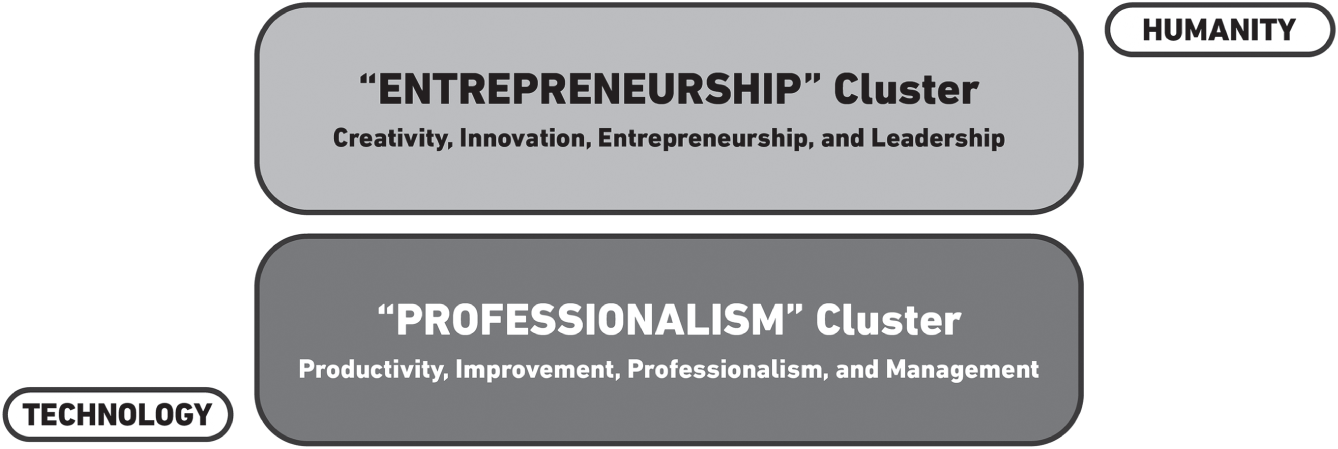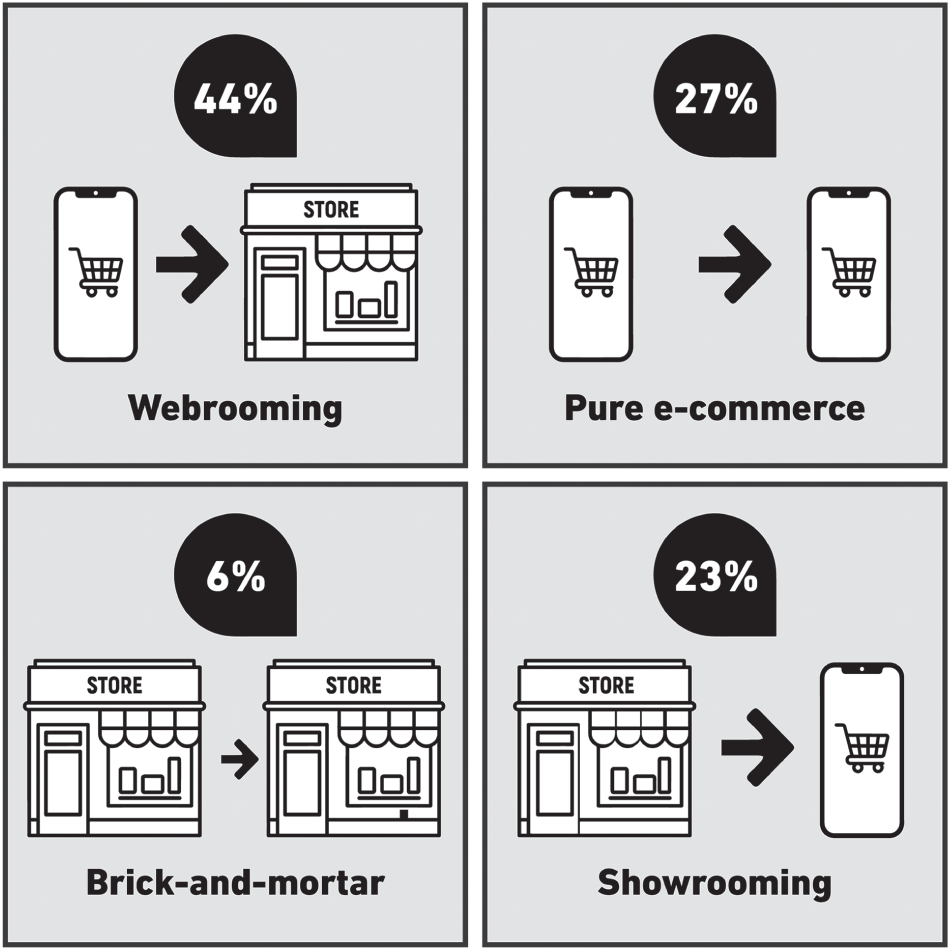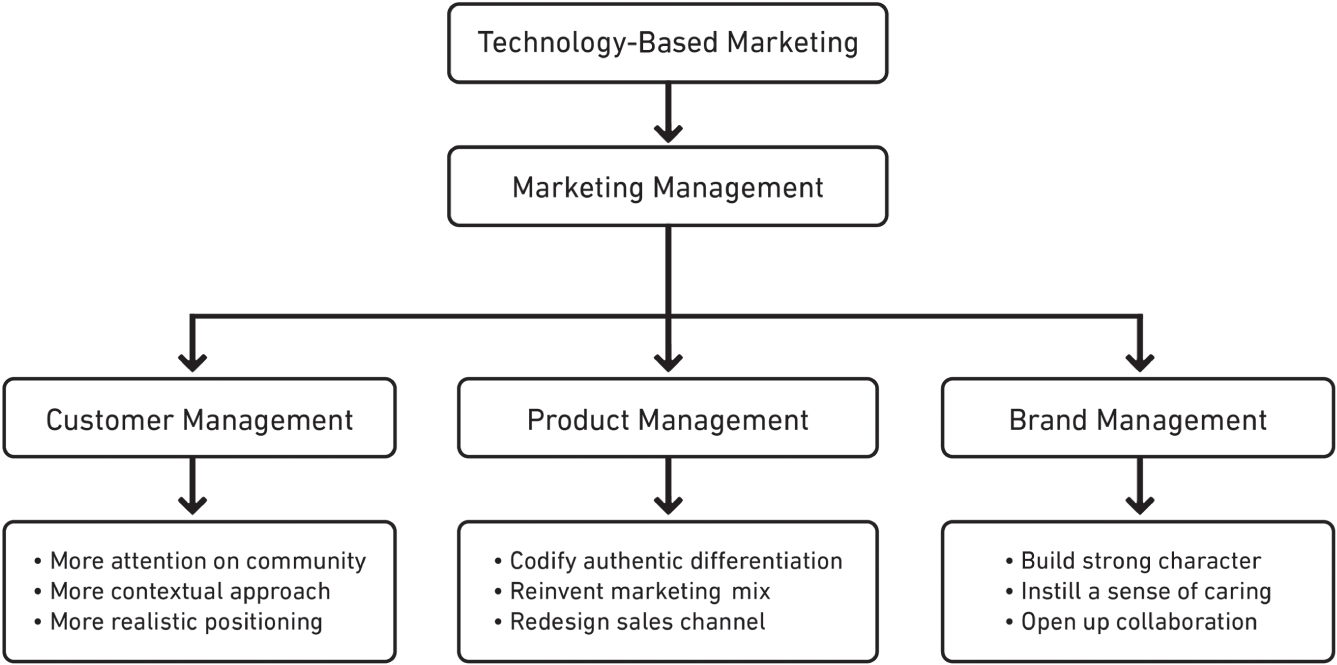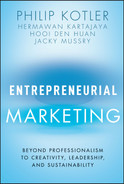CHAPTER 15
Technology for Humanity: High Tech, Higher Touch1
Today, a customer who wants to schedule a haircut at a salon can do so through Google's AI‐based duplex assistant service feature. This simulation, first announced in 2018, gives a human impression. It uses tone, language, and even filler worlds such as “mm‐hmm,” to the extent that customers may not even realize they are talking to a robot.2
The Google duplex service, now available in the US and other countries, frees its users from directly interacting with other parties. It enables customers to make a variety of transactions, including restaurant reservations and online movie ticket purchases. Its scope of services is expected to expand further in the coming years.3
The feature is symbolic of just how far AI has come. Gone are the days of robotic voices and limited vocabulary. The advancement also marks a shift from mobile‐first to an AI‐first world. AI enables technology to become more accessible, friendly, and solution‐oriented.4 No longer perceived as “cold,” AI can serve as a human interaction tool.
As AI and other technologies continue to develop, considering the human context is essential (see Figure 15.1). Stakeholders will be looking for the assurance that advancements are used humanely. Moreover, they will want to see technology provide tangible benefits, like an improved quality of life.

FIGURE 15.1 Technology and humanity elements in the omnihouse model
In Chapter 6, we discussed that technology and humanity are a dichotomy. In this chapter, we will look at how to converge technology and humanity to achieve higher revenue, build stronger brand awareness, and increase customer satisfaction. In Chapter 16, we will consider what benefits can be provided to employees, society, stakeholders, and the company itself.
The New Level of Touch
The discussion about high technology and high touch has been going on since John Naisbitt first described the concept in the early 1980s. Frequently, the topic has focused solely on the customer as the most crucial goal. However, there are other elements to consider, including the well‐being of society. The application of corporate social responsibility (CSR) may not always be embedded into a business process or model.
Furthermore, societal marketing tends to overlook the people in the company as a vital element. If we want to deliver benefits for humanity, the starting point lies with how employees are treated. Next, we can focus on customers as the source of the company's profitability. Finally, we can consider society, which is essential for long‐term sustainability.
One of marketing's blind spots is ignoring the humanity aspect. When this happens, marketing is merely a tool for the company's interest, which is solely profit‐oriented. Companies “persuade” the wider community to buy their products without paying attention to employees, the environment, or other stakeholders.
Despite its huge and rapid development, Amazon ran into troubles regarding the well‐being of its workers. In Christmas 2019, the Amazon “Faster Shipping” campaign led to more than US$87 billion in revenue. This achievement might have been excellent news for the shareholders, but to employees, who were only given two 15‐minute breaks, it may have seemed like a disaster. Reports of injury rates at one facility were also in the spotlight, resulting in a petition made by 600 workers at the Amazon warehouse, demanding that the company improve the working conditions and give more breaks.5
Amazon has also faced environment‐related challenges. A former employee mentioned pushing Amazon to develop its climate change policy at its annual board meeting.6 Amazon was promoting customer conveniences such as faster shipping, one‐day shipping, and 2‐hour grocery delivery, especially during high season or on specific days like Christmas. This campaign often didn't measure its worker loads and the impact on the environment from so many orders and fast shipments. The consequences included significant waste and pollution while rushing out deliveries.7
In response, Amazon stated it would promote the use of renewable energy in its business processes.8 The efforts may inspire other companies to follow suit and initiate environment‐focused programs. Doing so would align with the UN's SDGs in the years to come.9
In situations with few competitors, the customer sometimes does not have much say in how a company behaves. In recent years, as we have discussed, these conditions have changed. There has been a shift of bargaining power from producers to consumers, which is why companies need to be more customer‐centric. Customers are now more sophisticated, connected, educated, informed, challenging to satisfy, and disloyal. As such, companies today try to insert social elements into their business models, rather than promoting weak CSR efforts.
One company that has shown success is Cassava Bags Australia, who created a 100% natural biodegradable bag. It will dissolve entirely in water, deteriorate in landfills, and break down in other environments. The bag is safe for the environment because it is nontoxic, contains no palm oil, and is not harmful to marine life. The company was formed on the belief that businesses can be a force for good and that the singular actions of individuals, collectively, have the potential to transform the world.10 These bags generate a profit, protect the environment, and support SDG number 13, climate action.
It is important to underscore that every company also has a social responsibility. Companies must base their marketing efforts on values established by the leadership. Hence, tech‐driven marketing's goal for humanity is to create value through values.
Bitwise Industries, a tech ecosystem company, has developed digital programs that help underserved populations access their basic needs. The company built an app that manages grocery orders and tracks food deliveries. It also launched a network to connect workers with jobs.11 Its efforts showcase a strategy to integrate and align business with social affairs.
Implications of Tech‐Driven Marketing
Indeed, we cannot separate the new entrepreneurial marketing genre from the technology support that will affect marketing in a company, both for B2B and B2C. The marketing application within a company can no longer only refer to the marketing dimension itself. It must be transcendent and collaborative, banish existing silos between departments, and converge existing functions. For this purpose, technology will play a crucial role as an enabler.12
In line with strengthening the tech‐driven marketing approach, marketers may need to get out of their comfort zone to understand new technologies. If they don't, they could quickly become incompetent and, ultimately, irrelevant. For example, Borders at one time was a national book and music retailer. Once a very popular location, Borders eventually went into massive debt and invested in retail locations without realizing that customer habits were changing rapidly. Entering the digital era, Borders was late to accommodate the technology that provided e‐books and music streams. With too much spent on real estate and not enough on technology innovation, Borders could not maintain its business.13
Facing the future, we must combine technology with the marketing discipline. To trailblaze versus merely catch up, a company should hire a marketing technologist, a new type of marketer who can design and operate the necessary technologies to carry out marketing‐related efforts and understand the technological context. A new breed of these marketers can see and realize the application of marketing in an already digital world.14
In 2020, internet users worldwide reached 4.83 billion, with more than 60% of the global population connected to the internet. This number will continue to escalate, and by 2030 it has been estimated that 90% of people will be connected online.15 Advertising on mobile ads is growing to coincide with these trends.16
This opportunity aligns with where our marketing technology is heading. Marketing has become more digitalized and advanced. For example, big data, blockchain, and social media advertising tools like Facebook ads and chatbots enable marketers to provide customers with more customization and personalization.17 Although the effectiveness varies among industry sectors, many companies, both B2C and B2B, have used social media platforms such as Instagram, TikTok, and LinkedIn. These tools, combined with technology, will help marketers to know their customers, their shopping preferences, and the specific keywords they use when searching.
For the best application of new technology to a brand or product, marketers need the support of other departments in the company, such as information technology and legal. The more insights companies can collect, the more strategies they can build. The challenge is not about the data collected but how to use it.18
A tech‐driven marketing approach goes beyond installing new technologies. It affects the entire company by integrating departments and establishing a new mentality. Research by McKinsey shows that a few keys to the success of digital transformation include hiring tech‐savvy executives, developing future workforce capabilities, empowering employees to work in new ways, offering day‐to‐day tools a digital boost, and frequently communicating via traditional and digital methods.19
In general, the application of technology‐based marketing will have implications for marketing management, including customers, products, and brands.
Customer Management
Companies can better manage customers with the help of technology, which focuses attention on several components, as discussed in the next sections.
More Attention on Community
In the era of connectivity, we see that community is becoming increasingly important for companies to understand the market better, build relationships, understand customers, and carry out an exchange of value. Intimacy with the community―both offline and online―will enable companies to better support customers. Shoppers can get acquainted and interact with each other as well as the brand.20
More Contextual Approach
With the support of technology, a company can and should manage customers in a one‐on‐one manner. It can enable customers to interact anytime and anywhere as long as they are connected online. Companies can provide personalization and vice versa; customers can customize products and services to meet their preferences.
AI‐based interactions can provide a better customer experience and robust engagement. This can occur through digital platforms such as chatbots. For example, Mastercard, a leader in global payments, launched a chatbot, mainly for customers' inquiries. These bots can answer questions related to an account balance, money managing tools, and transaction records.21
Content marketing—primarily through social media platforms that are entertaining, inspiring, educating, and convincing―will play a more significant role. These efforts can create awareness, generate interest, and increase customer advocacy. It can lead customers to discover information, make purchases, and continue using the products and services.
Testimonials, case studies, and content featuring real customers are crucial components to gain customer trust. This is often referred to as “social proof.” We can use customer‐generated content, put it on social media, and let the community discuss and share an honest opinion about the products. Hence, it will be easier for everyone to find more helpful information and share it with friends. This platform can also enable marketers to get feedback on their products or see whether their marketing strategies work.22
Customer‐generated content can provide direct contact and help our brand recognition within the customer community. Ultimately, a positive experience will resonate with the brand's credibility. It could lead to repurchase, resulting in increased customer retention. The more content relates to the real‐life experience of a customer, the easier it will be to gain customer satisfaction.23
More Realistic Positioning
Customers and the wider public have more access to determine if a company keeps its promises. They are value‐ and purpose‐driven, willing to alter their purchasing patterns to support a cause. They apply the “trust, but verify” approach, and check more than the information on the packaging. As shown by research from IBM in 2020, up to 75% of customers who already trust a brand will still do extensive research before making purchases.24
Because customers are getting smarter and understand our company inside and out, it is not uncommon for a “consensus” to surface among customers to accept a company's positioning. Therefore, companies must ensure promises align with reality. Customers and the public will know if messages contain the truth, which is the foundation for building customer trust.
Fast‐fashion brands such as Zara, H&M, and M&S are launching green and sustainable clothing lines. H&M became one of the big players in this trend when it implemented a new green clothing line called “Conscious” in 2019.25 They claimed to use more sustainable materials, such as organic cotton and recycled polyester, to help reduce environmental waste. However, customers started to investigate the claim and found that it was misleading, with a lack of existing evidence to support it. We often refer to this phenomenon as “greenwashing,” creating a false impression or presenting incorrect information about how a company's products are more ecologically friendly.26
In August 2021, climate activists protested by sitting in the window display of an H&M store in the UK that displayed posters claiming the brand as an “Eco Warrior & Climate Crusader.” Their purpose was to show their disagreement with advertising techniques compared to the actual product that H&M sold. This reaction to greenwashing shows that customers are now more critical than ever when receiving positioning messages from brands.27
Product Management
In line with the increasingly mainstream customization and personalization, managing products and matters related to these products has become more challenging. Companies will do well to carry out the actions described in the following sections.
Codify Authentic Differentiation
The solution platform is crucial to strengthening differentiation, which can become the basis for establishing a lock‐in mechanism. For instance, the Ritz‐Carlton brand is known for its “gold standards,” which are the foundation of its culture and services. Its philosophy, “We are ladies and gentlemen serving ladies and gentlemen,” pertains to how visitors and coworkers alike are treated.28 The service, supported by its loyalty program, has led Ritz‐Carlton to become one of the world's top destinations for patrons seeking a luxury and high‐quality experience.
An organization can also identify elements of its corporate DNA to develop an authentic differentiation. It must communicate these stand‐out features to customers. The elements will need to be relevant so that customers who appreciate them are willing to pay for them. The solution platform then should reflect this authenticity.
Reinvent Marketing Mix
Companies can expand opportunities for using their customers' input to improve product development. Involving customers in this co‐creation process on different technology‐based platforms enables customization, reduces the company's R&D costs, and minimizes the opportunity for product failure to occur.29 For instance, Starbucks launched My Starbucks Ideas to focus on what customers want and gather ideas regarding products, in‐store experiences, and the company's involvement on social issues.30 The platform provides space for customers to share ideas and discuss what improvements they want to see. Their input has helped the company create new flavors, led to Wi‐Fi in all its stores, and even the development of a mobile app.31
Consumer prices are dynamic, similar to currency exchange rates. A company can no longer set and fix prices unilaterally. Instead, the customer and company can work together to determine the value. Uber's base fare is typically lower than a taxi, but it can fluctuate depending on variables such as time and distance, traffic, and rider‐to‐driver demand. This information enables customers to evaluate the prices and decide if they are reasonable for them.32

FIGURE 15.2 The phygital lifestyle33
Promotion must be two‐way in nature to become a conversation in line with a company's increasingly horizontal position with its customers. For instance, Paradigm Life, a banking and solutions supplier based in the US, created an interactive financial literacy quiz. The arrangement informed customers of their level of financial expertise. It also unconsciously made people perceive they needed Paradigm's services if they did not achieve high scores.34
Redesign Sales Channel
Selling should be solution‐centric by leveraging omni‐channel capabilities. Brick‐and‐mortar companies must also exist online, and vice versa (see Figure 15.2).
In the figure, webrooming refers to consumers researching products online first and then buying the products in a physical store. Showrooming is when the customer tries out the products in a physical store before buying them online.35 The omni‐channel sales process maintains an effort to meet customer preferences and actively involve them. With the help of technology, a salesperson can get a closer and more accurate perspective of the customers' individual needs, offer solutions, and close the sale through a transparent transaction process.
Brand Management
In line with the more robust guidance to humanize customers, an organization should direct brand management to show human traits in the brand identity and messaging. To do so, firms can adhere to the following in their messaging.
Build Strong Character
Using technology that can mimic human traits is becoming more critical. Management must build a strong character in a brand to become alive like a human. For more than 20 years, Nike's tagline “Just Do It” has appeared on their products. It is simple yet direct, powerful, and competitive. Nike has also used this to inspire female empowerment in sports. The company considers the line to be more than just a slogan, but rather a philosophy.36
Instill a Sense of Caring
Technology can help create a more proactive approach to customer care. Analytics may reveal common pain points and desires of customers. Adjustments on how to handle situations can be made based on the findings.
In 2018, Spotify patented speech recognition technology that observed patterns. The arrangement enabled the company to combine speech recognition with other information, such as previously played songs. It could then recommend new songs as suggestions to listeners.37
Open Up Collaboration
Some interactive processes can be done by collaborating with customers and enabling them to do it themselves, similar to outsourcing. Assigning roles in these processes makes customers an inseparable part of the company. Furthermore, in doing so, companies can collaborate with multiple partners in a specific digital business ecosystem.

FIGURE 15.3 Implications of technology‐based marketing on marketing management
Singapore Airlines collaborates with its passengers by providing several check‐in options online through its official website, its app, the check‐in service kiosk, or the check‐in counter. In addition, at specific terminals at Changi International Airport, travelers can take advantage of the automated bag drop where they can print baggage tags at the self‐service kiosk, attach the tags, and put their luggage on the conveyor belt, all by following the instructions on the screen.38 This method frees passengers from the queue and, at the same time, eases the burden on Singapore Airlines officers.
Through collaboration, the company invites customers to participate in the value‐creation process. Customers can monitor all stages of delivery of the product or service they need. When waiting for a food delivery, for example, customers often want to know where their meal is. With a tracking system, they can watch its progress and prepare for its arrival.
Together, technology and the right marketing strategies can create a positive impact for everyone involved (see Figure 15.3). Tech‐driving marketing leads to better customer management, product management, and brand management. In Chapter 16, we'll look at further benefits that come from combining the powerful forces of technology and humanity.
Key Takeaways
- Technology can be used in marketing to create higher levels of touch at the employee level and for the betterment of society to create long‐term sustainability.
- Tech‐driven marketing has positive implications for managing customers in the following ways: to pay more attention to community, create a more contextual approach, and develop realistic positioning.
- For products, technology can be used in marketing to codify authentic differentiation, reinvent the marketing mix, and redesign sales channels.
- Marketing and technology together can liven up the character of a brand, instill a sense of caring, and open opportunities for collaboration.
Notes
- 1 This subtitle borrows the term high tech high touch, which was put forward by John Naisbitt in his book with Nana Naisbitt and Douglas Philips, High Tech High Touch: Technology and Our Accelerated Search for Meaning (London: Nicholas Brealey Publishing, 1999).
- 2 https://www.youtube.com/watch?v=D5VN56jQMWM
- 3 https://www.androidauthority.com/what-is-google-duplex-869476/
- 4 https://blog.google/technology/ai/making-ai-work-for-everyone/
- 5 https://www.theguardian.com/technology/2020/feb/05/amazon-workers-protest-unsafe-grueling-conditions-warehouse
- 6 https://www.bbc.com/news/business-56641847
- 7 https://www.wbur.org/onpoint/2021/07/09/the-prime-effect-amazons-environmental-impact
- 8 https://www.bbc.com/news/business-56641847
- 9 https://www.wbur.org/onpoint/2021/07/09/the-prime-effect-amazons-environmental-impact
- 10 https://cassavabagsaustralia.com.au/
- 11 https://www.npr.org/2022/02/04/1078050740/irma-olguin-why-we-should-bring-tech-economies-to-underdog-cities
- 12 Please refer further to https://hbr.org/2019/07/building-the-ai-powered-organization
- 13 https://www.collectivecampus.io/blog/10-companies-that-were-too-slow-to-respond-to-change
- 14 As disclosed by Scott Brinker and Jason Heller. Please refer to https://www.mckinsey.com/business-functions/marketing-and-sales/our-insights/marketing-technology-what-it-is-and-how-it-should-work
- 15 https://www.currentware.com/blog/internet-usage-statistics/
- 16 https://www.statista.com/statistics/303817/mobile-internet-advertising-revenue-worldwide/
- 17 https://www.ama.org/journal-of-marketing-special-issue-new-technologies-in-marketing/
- 18 https://www.digitalmarketing-conference.com/the-impact-of-new-technology-on-marketing/
- 19 https://www.mckinsey.com/business-functions/people-and-organizational-performance/our-insights/unlocking-success-in-digital-transformations
- 20 https://seths.blog/2012/02/horizontal-marketing-isnt-a-new-idea/
- 21 https://www.retaildive.com/ex/mobilecommercedaily/mastercard-unveils-chatbot-platform-for-merchants-and-banks-along-with-wearable-payments
- 22 https://www.socxo.com/blog/5-ways-customer-advocacy-will-enhance-content-marketing/
- 23 https://blog.usetada.com/win-the-market-with-customer-advocacy
- 24 https://www.ibm.com/downloads/cas/EXK4XKX8
- 25 https://a-little-insight.com/2021/05/09/hm-are-greenwashing-us-again-can-fast-fashion-ever-be-ethical/
- 26 https://www.investopedia.com/terms/g/greenwashing.asp#:~:text=Greenwashing%20is%20the%20process%20of,company's%20products%20are%20environmentally%20friendly
- 27 https://www.bigissue.com/news/environment/hm-greenwashing-is-disguising-the-reality-of-fast-fashion/
- 28 https://ritzcarltonleadershipcenter.com/about-us/about-us-foundations-of-our-brand/
- 29 Refers to the concept of C.K. Prahalad and Venkat Ramaswamy in their book The Future of Competition: Co‐Creating Unique Value with Customers (Boston, MA: Harvard Business Review Press, 2004).
- 30 https://digital.hbs.edu/platform-digit/submission/my-starbucks-idea-crowdsourcing-for-customer-satisfaction-and-innovation/
- 31 https://skeepers.io/en/blog/customer-loyalty-increases-starbucks-profits
- 32 https://www.forbes.com/sites/forbestechcouncil/2019/01/08/dynamic-pricing-the-secret-weapon-used-by-the-worlds-most-successful-companies/?sh=3eadac2a168b
- 33 Philip Kotler, Hermawan Kartajaya, and Iwan Setiawan, Marketing 5.0: Technology for Humanity (Hoboken, NJ: Wiley, 2021).
- 34 https://paradigmlife.net/perpetual-wealth-strategy
- 35 https://www.techopedia.com/definition/31036/webrooming
- 36 https://hbr.org/1992/07/high-performance-marketing-an-interview-with-nikes-phil-knight
- 37 https://www.bbc.com/news/entertainment-arts-55839655
- 38 https://www.singaporeair.com/en_UK/sg/travel-info/check-in/
